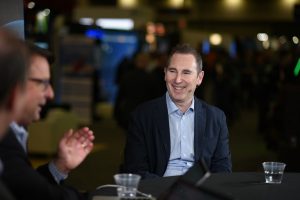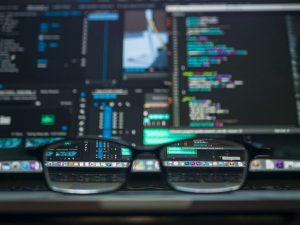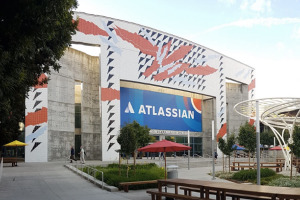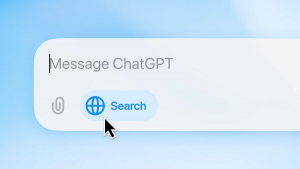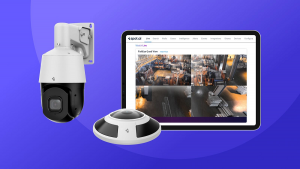Internet of Things and Smart Cities: what happens when the ‘unconnected’ connect
![]() Up until now, the Internet has been used primarily as a medium for the transfer and exchange of data and information and has been optimized for access and speed. Experts now agree that the next phase of the “Internet for the People” brought by the rise of the Internet of Things (IoT).
Up until now, the Internet has been used primarily as a medium for the transfer and exchange of data and information and has been optimized for access and speed. Experts now agree that the next phase of the “Internet for the People” brought by the rise of the Internet of Things (IoT).
IoT leads a sweeping cultural change as a huge number of machines, devices, sensors, actuators, and other objects become interconnected to each other and to higher-level systems. Due to the enormous amount of variety of connectable devices and automatically collected data entirely new services and features may arise, which are to form the basis of, among others concepts, “Smart Cities”.
IoT and big data are both technology-driven developments. The IoT and Smart City scenario will bring enormous market opportunities as well as make citizen lives smarter. The products around us are becoming more intelligent. Furthermore, these developments change our behavior!
We are in the midst of an era where we are discovering new opportunities brought to life by new hardware and software designed to take advantage of the flow of new personal and global data.
Embracing the APIs for IoT growth
With consumers now embracing smart home solutions, an open API model will eliminate obstacles and reduce friction for advanced energy management models. One example is the Wi-Fi enabled thermostat industry, which is growing at a rapid pace. Ecobee, makers of the world’s first smart thermostat, integrates an API model with energy companies and smart home solutions, such as AutoGrid, Earth Networks and SmartThings, to accelerate the Internet of Things and enhance consumer engagement.
Emerging standards like OpenID Connect and OAuth 2.0 are enabling cloud and mobile-ready features like device agnostic single-sign on (SSO) across environments. A system that uses REST APIs also makes it more developer friendly, and is a lightweight and flexible alternative to traditional SOAP-based Web services.
![]() IBM has been part of using the IoT and big data analysis as tools to assist governments and urban centers better handle their infrastructure. The IBM Smarter Cities initiative involves using these technologies to provide better insight and automation. IBM Intelligent Operations Center provides an executive dashboard to help city leaders gain insight into various aspects of city management. IBM Intelligent Operations Center enables cities to manage large complex environments, communicate more effectively with citizens, understand the state of the city and collaborate between departments.
IBM has been part of using the IoT and big data analysis as tools to assist governments and urban centers better handle their infrastructure. The IBM Smarter Cities initiative involves using these technologies to provide better insight and automation. IBM Intelligent Operations Center provides an executive dashboard to help city leaders gain insight into various aspects of city management. IBM Intelligent Operations Center enables cities to manage large complex environments, communicate more effectively with citizens, understand the state of the city and collaborate between departments.
Ericsson Research in collaboration with the Swedish Institute of Computer Science and Uppsala University developed a system called the IoT Framework. The IoT Framework is a computational engine for quantitative information accumulated by sensors connected via any IP network such as the Internet. The framework is available as open source software in Github, released under the Apache 2.0 license.
The framework acts as an overarching combined Resource Directory and Mirror Server that collects information simple sensors with IP connectivity and distributes it. The information is then stored in a database and time-stamped, thus creating a historical footprint of what a sensor has measured in the form of a time-series. The information is recorded in a NoSQL database, powered by Elasticsearch that allows for keyword-based queries, thus making the information accessible to interested parties such as third party application developers.
IoT Framework is being used by Cognitive Network Management Under Uncertainty project (COMMUNE) for storing real-time data from wireless sensors. Ericsson is also planning to use it in EU FP7 Citypulse for storing information in a “Smart City” context. In the context of water management, this framework can be used to regulate electronic valve when a threshold is exceeded in the stream that is monitoring the level of the flow in a water pipe.
The EPIC Project (EU Platform for Intelligent Cities) has contributing to the growing popularity and use of the concept of Smart City using new technology applications such as RFID, IoT and big data. Open source technologies for the IoT using APIs for sensors, hardware, RDIF, M2M solutions and open source augmented reality is leading to number of new smart solutions. On such initiative is Waspmote, which is a modular open source wireless sensor platform for building networks of sensors with very low consumption.
![]() Waspmote is a sensor device specifically oriented to developers. Currently there are over 50 available sensors and IDE (Libraries API + compiler). The platforms for smart sensors, produced by Libelium, are compounded by open source hardware and are characterized by their robustness, ease to incorporate dozens of different sensors and operate over long distances. The other examples are Arduino, DASH7, Rasberry Pi, BeagleBone, Ninja Blocks, Tiny Duino, Nanode, The Rascal, RadioBlock, openPicus, Fosstrak, Mango, Accada and others.
Waspmote is a sensor device specifically oriented to developers. Currently there are over 50 available sensors and IDE (Libraries API + compiler). The platforms for smart sensors, produced by Libelium, are compounded by open source hardware and are characterized by their robustness, ease to incorporate dozens of different sensors and operate over long distances. The other examples are Arduino, DASH7, Rasberry Pi, BeagleBone, Ninja Blocks, Tiny Duino, Nanode, The Rascal, RadioBlock, openPicus, Fosstrak, Mango, Accada and others.
AT&T and IBM team up around smarter cities
Big Blue and the U.S. telecommunications giant AT&T (who is also has a foot in the area of connected cars) announced a few days ago a partnership on IoT technologies. The two companies intend to combine their analytics platforms, cloud and security technologies in order to gain more insights on data collected from machines in various industries.
The new alliance will initially focus on the creation of new solutions for municipalities and medium-sized utilities. These government agencies want to integrate and analyze very high volumes of data that arise from the records of facilities such as transport vehicles, utility meters and security cameras. Here, IBM’s Intelligent Operations Center, Mobile First Platform and IBM MessageSight MQTT Appliance will come into play. Cities could benefit from an analysis of traffic data, utilities of a precise measurement of energy consumption in households and many more.
“Smarter cities, cars, homes, machines and consumer devices will drive the growth of the Internet of Things along with the infrastructure that goes with them, unleashing a wave of new possibilities for data gathering, predictive analytics, and automation,” said Rick Qualman, Vice President, Strategy & Business Development, Telecom Industry, IBM. “The new collaboration with AT&T will offer insights from crowdsourcing, mobile applications, sensors and analytics on the cloud, enabling all organizations to better listen, respond and predict.”
Natural disaster and IoT initiatives
While much of the country has been hammered by winter storms, Silicon Valley and the rest of California have faced a record drought in 2014. The California drought is much bigger crisis for the nation as California’s agriculture sector supplies about half the nation’s fruit and vegetables and uses about 80 percent of the state’s water.
![]() As California faces its worst drought on record, communities, agencies and firms are calling on the latest generation of technology to aid in the effort to conserve precious water. From cloud computing to the IoT technologies, Silicon Valley has an opportunity conserve water and to offer technological solutions to the problem.
As California faces its worst drought on record, communities, agencies and firms are calling on the latest generation of technology to aid in the effort to conserve precious water. From cloud computing to the IoT technologies, Silicon Valley has an opportunity conserve water and to offer technological solutions to the problem.
The 1-year pilot was conducted among residents living within East Bay Municipal Utility District’s (EBMUD’s) service territory. A study from an independent agency showed that when participants received information comparing their water consumption to neighborhood averages, usage decreased by 5 percent on average.
The pilot was partially funded by the California Water Foundation and employed a behavioral water efficiency approach to encourage customers to reduce consumption. WaterSmart, a San Francisco-based venture-funded company, delivers a software-as-a-service (SaaS) tool, which applies analytics and behavioral science tools to crunch data and provide consumers with feedback information and tips for cutting consumption.
Peter Yolles of WaterSmart says that the biggest change since the last major California drought of 1987-92 is the rise of whole new technologies, software-as-a-service, big data, behavioral economics — all three of those are new since the last drought. The IoT program is helping the state meet its goal of a reducing water usage by 20 percent per capita statewide.
“With California experiencing a serious drought, improving outdoor water-use efficiency is an important way our region can achieve sustainable long-term water savings,” said Jason Foster, director of Public Outreach and Conservation for the Water Authority. “More than half of the water used at the average home is used outdoors. That creates big opportunities for reducing water use.”
Another company, Leak Defense, is developing a device for detecting water leaks in the home that will be similar to a smoke detector. The device uses the home’s Wi-Fi system to alert home owners when there is a potential water leak issue such as a running toilet. The device need to be installed to the outside of an intake pipe to detect the flow of water. The IoT device is smart enough to detect potential water leak issues.
photo credit: Valentina_A via photopin cc; DeeAshley via photopin cc; Michał Koralewski – mobile photography via photopin cc; and the National Oceanic and Atmospheric Administration
A message from John Furrier, co-founder of SiliconANGLE:
Your vote of support is important to us and it helps us keep the content FREE.
One click below supports our mission to provide free, deep, and relevant content.
Join our community on YouTube
Join the community that includes more than 15,000 #CubeAlumni experts, including Amazon.com CEO Andy Jassy, Dell Technologies founder and CEO Michael Dell, Intel CEO Pat Gelsinger, and many more luminaries and experts.
THANK YOU












